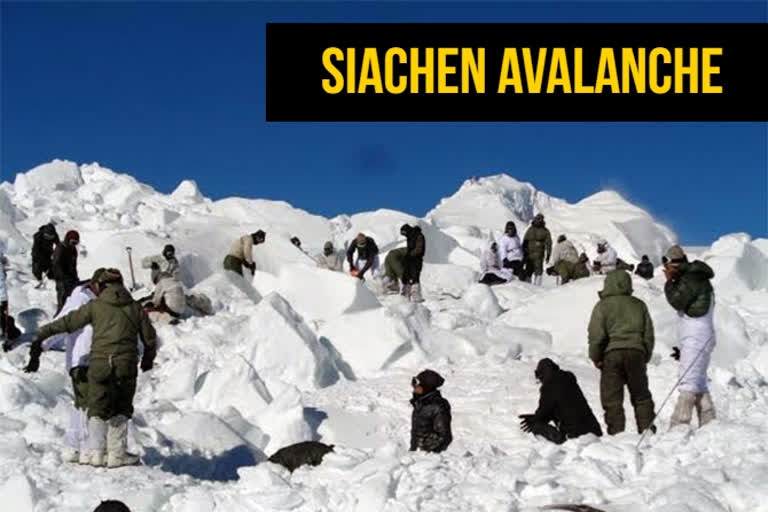New Delhi:Nature is at its cruellest for man at the unforgiving terrain of the world’s highest battleground! The Bana Top post at Siachen, the second largest glacier in the world after the polar region, is virtually a death zone with scarce oxygen and controlling the zone comes at a heavy cost of men and resources.
It is somewhere near this post, at about 20000 feet, that the heavy winter ice and accumulated snow gave away and an ice wall came crashing down on an Indian Army team of eight soldiers, who were on a routine patrol on Monday.
It may be a place where ‘not a blade of grass grows’, but the Bana Top accords a clear overview of the Saltoro Ridge and the Siachen glacier - and it doesn’t take a military man to understand the immense tactical value of such a post. Nor in the least, because this is the area is one of the biggest freshwater reserves of the country.
That is why the Bana Post, at more than 21,000 feet, is remembered with pride after the valorous exploits of Subedar Major and Honorary Captain Bana Singh who led a small team up a 1,500 feet high sheer ice wall to claim the spot from the Pakistanis after a bloody fight on June 26, 1987.
An emergency rescue using trained men, sniffer dogs, high altitude equipment and military helicopters that were pressed into service was to be in vain despite the best efforts. While the men buried under heavy snow were pulled out and given medical treatment, the freezing temperatures, and high altitude hazards had taken their toll. Four army jawans and two civilian porters lost their lives.
On Tuesday, Defence Minister Rajnath Singh spoke to Army chief General Bipin Rawat from Singapore where the minister is on an official visit to inquire about the Siachen incident even as he tweeted his condolence- “Deeply pained by the demise of soldiers and porters due to avalanche in Siachen. I salute their courage and service to the nation. My heartfelt condolences to their families.”
Also read:Defence minister condoles deaths of Army personnel, porters in Siachen
